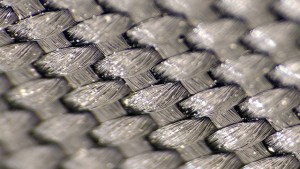A cancer-caused mutation in a protein provides clues to improving the production of a chemical used to make nylon.
Invented in 1935, nylon found its first use replacing silk in stockings. Supplies of nylon dwindled during World War II as the material was funneled towards making rope, parachutes and mosquito netting. Once the war ended, ladies formed long lines – “nylon riots” -- at local stores hoping to purchase easy-care nylon stockings once again.
Now nylon is so common, in things from rope to zippers, that it’s hard to imagine supplies were ever low. It’s easy to make too: Mix two particular liquids and nylon strands form where the liquids touch. The synthesis of nylon is a common chemistry demonstration:
Those liquid precursors to nylon, including something called adipic acid, typically come from petroleum processing. Some chemical companies want to create environmentally friendly sources of these chemicals, starting from sugar instead of fossil fuels. These companies hijack and rework the metabolism of bacteria and yeast so the microbes convert sugar into commodity chemicals. Hopefully the final products will be cheaper than their petroleum-derived counterparts, as well as “greener” in terms of releasing less greenhouse gases during production.
